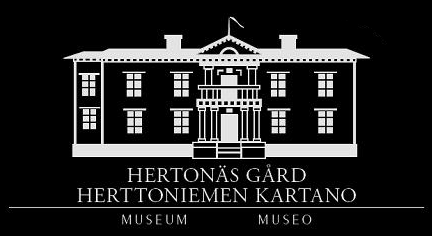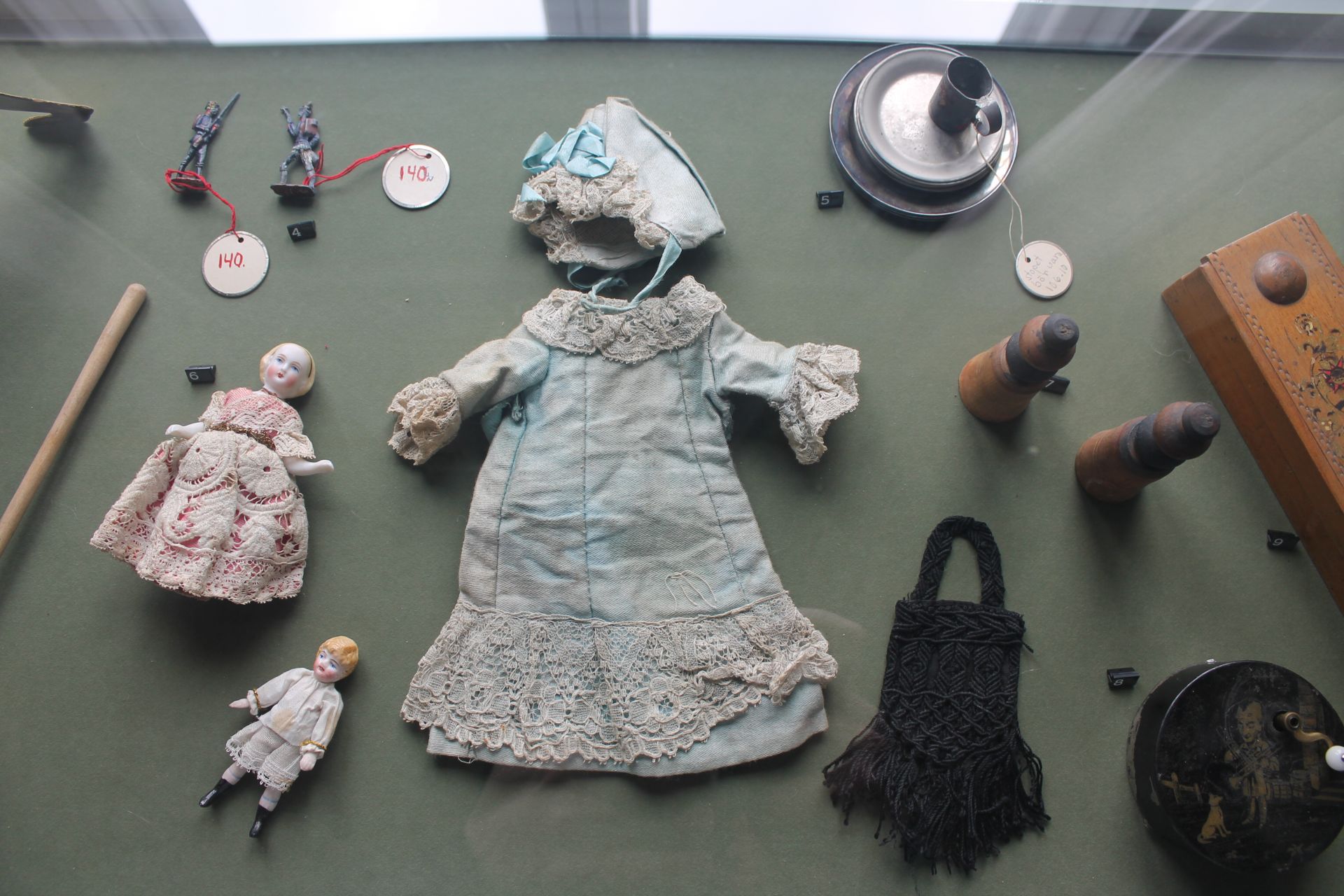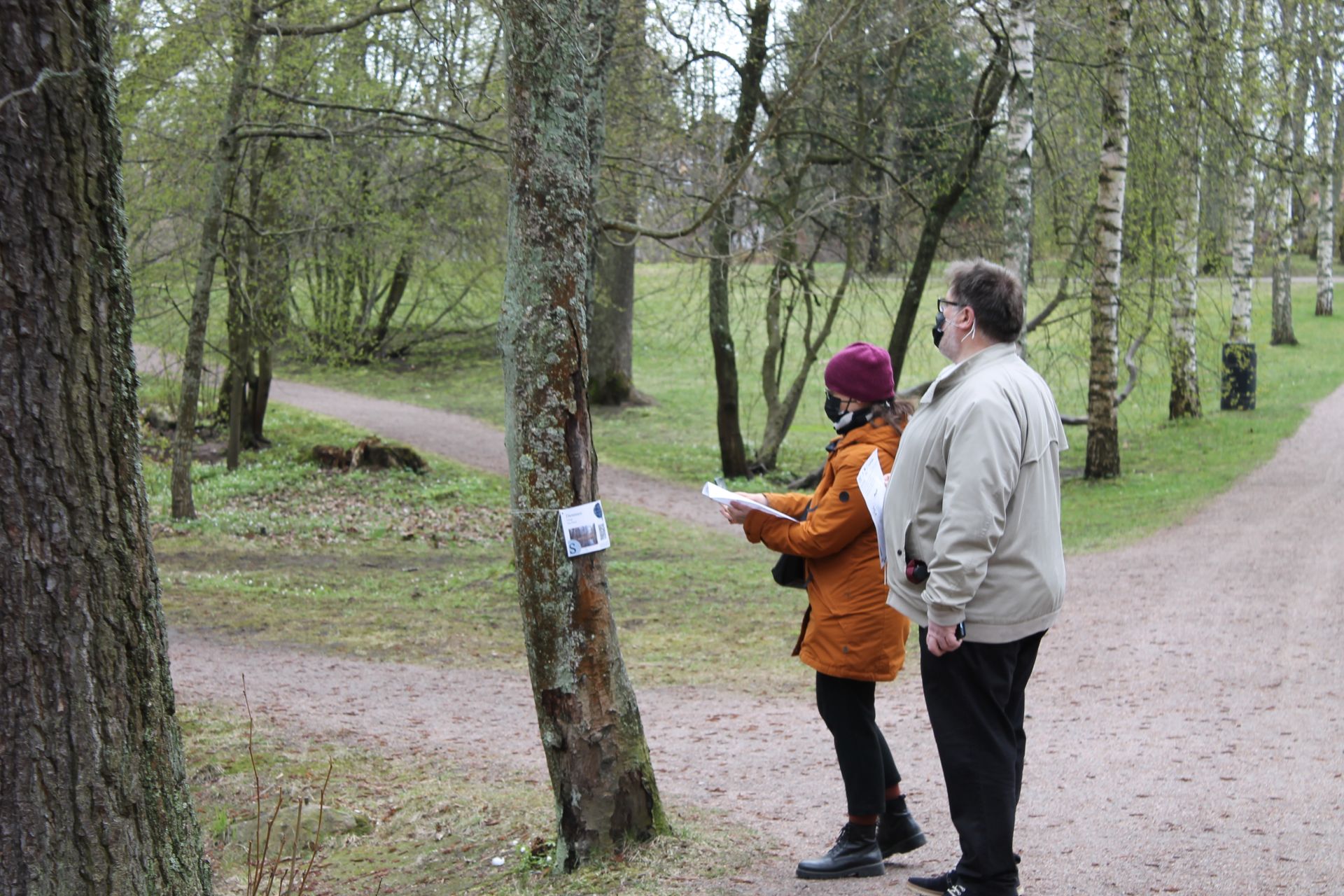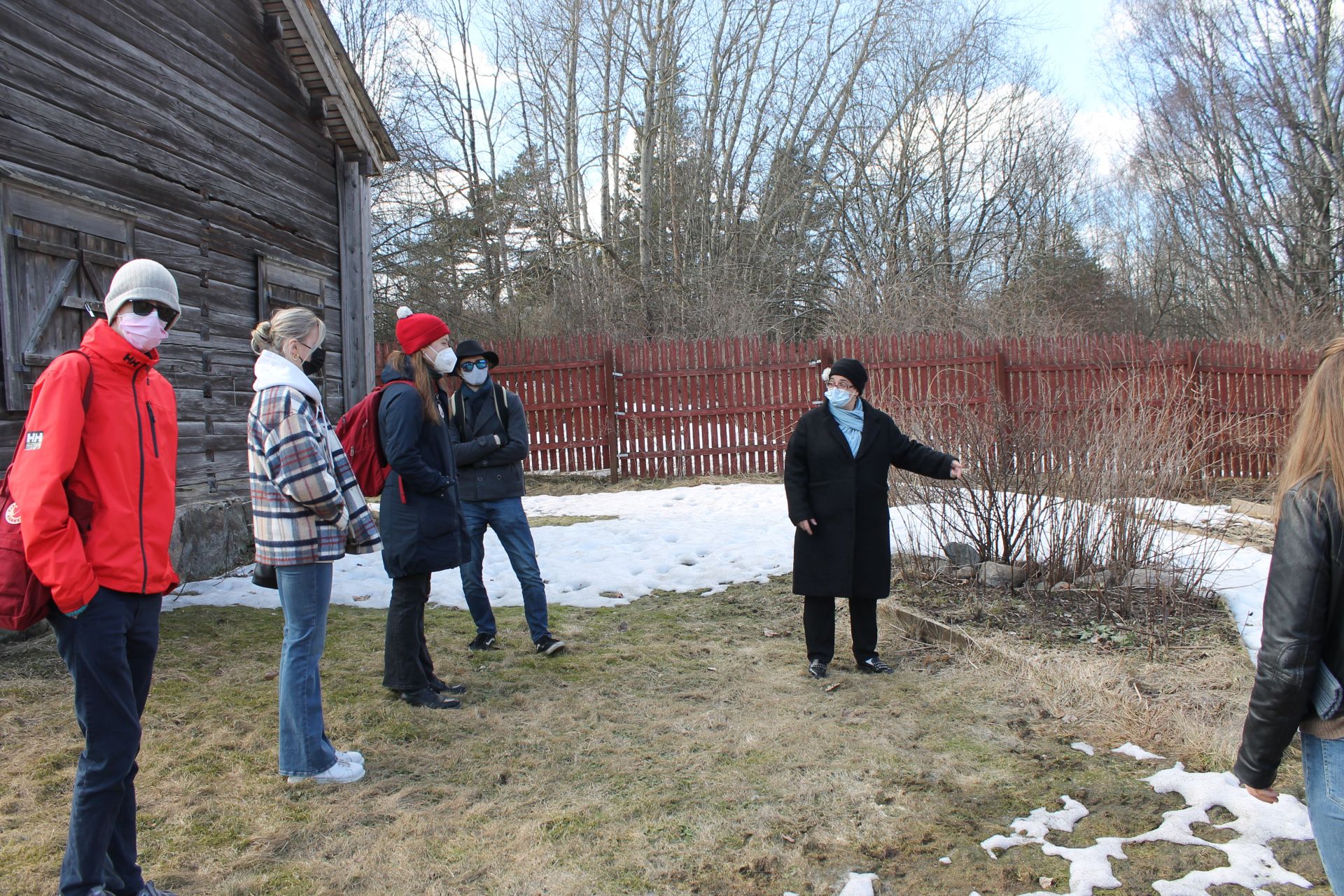Due to COVID-19, the course was held primarily via Zoom-calls once a week. Lectures were given on cultural, historical, and practical topics – for example museums and their activities in Finland, problematic cultural heritages, and practical components and problems we were to face during our production of the exhibition. Minna Sarantola Weiss, head of research at Helsinki City Museum, also paid us a visit and gave us an interesting glimpse of what the professionals are working with at the City Museum. To work remotely with a physical exhibition was tough, and sometimes utterly impractical, but luckily we had the option to visit the grounds and main building of the museum during the run of the course. Additionally, our teacher Eva gave us a guided tour of the grounds and manor, explaining its history to us.
The theme of the exhibition was chosen after we noticed the amount of interesting toys and other objects pertaining to children in both the museum’s catalogue and Sigbritt Backman’s “Hertonäs Gård – Från säterier till museum” and “ Tidsresa med Svenska Odlingens Vänner i Helsinge”, a book which we found incredibly useful in our work. After digging out these objects, we agreed they were interesting not only by themselves, but also for telling the stories of children from all backgrounds that may have lived and worked on the manor grounds.
We arranged ourselves in groups with different assignments: some took responsibility for the finances of the project, some for the marketing, others for the research and writing. Another group took care of the graphic design, and yet another handled the virtual exhibition. Sometimes the work dragged on, at other times everything fell into place quickly – there were allsorts of things to consider, such as practical arrangements, logistics, financing, picking what objects to exhibit, and debating moral discourses – where is the line when it comes to dramatizing history for commercial gain? When is it false and when is it simply stylized? A lot of time was also invested in researching the histories of the exhibited objects, involving several sources and databases such as the National Archives, Finna.fi, and other catalogues we had access to!
The space for our exhibition was to be the stair area and the window on the 2nd floor. We applied for grants and were subsidized by the Tre Smeder Foundation, which made our plans possible. Of all the objects we were interested in we picked 12 to exhibit and place in our showcase, which was kindly lent to us by Svenska litteratursällskapet, as well as 2 additional objects that were placed behind the case on the windowsill – among them the “legendary” boat Toivo. The chess pieces and table from the permanent exhibition of the museum was also tied to our exhibition. To utilize the stairs, we designed and wrote texts about 19th century childhood. For accessibility, we also made a digital version of our exhibition – it is accessible on the bookcreator.com platform (in Finnish and Swedish). Together with the digital exhibition, we also created a treasure hunt for visitors of all ages that can be enjoyed in the park of the manor.
Content-wise, the course was as projects of culture often is: you learn (or are forced to learn) a lot of new things, you panic over small details and swear to never do anything like it again – only to want to do something similar once everything is over.
Our group would like to thank Derek Fewster, Eva Ahl-Waris, Svenska Litteratursällskapet, the Tre Smeder Foundation, Malmgård, YLE and Minna Salantola-Weiss for this fun experience and educational course! Hopefully, our exhibition will be seen by many pairs of eyes during the coming months and we all get to be part of something similar again soon!
The group consisted of Helsinki University students Eira Aalto, Wilhelm Breitenstein, Emil Eklund, Karl Heikkilä, Ida Karlgren, Emelie Schauman, Sten Selin and Kajsa Väyrynen.
Translation by Ida Karlgren.

Arranging the objects of the exhibition. Photo: Eira Aalto.
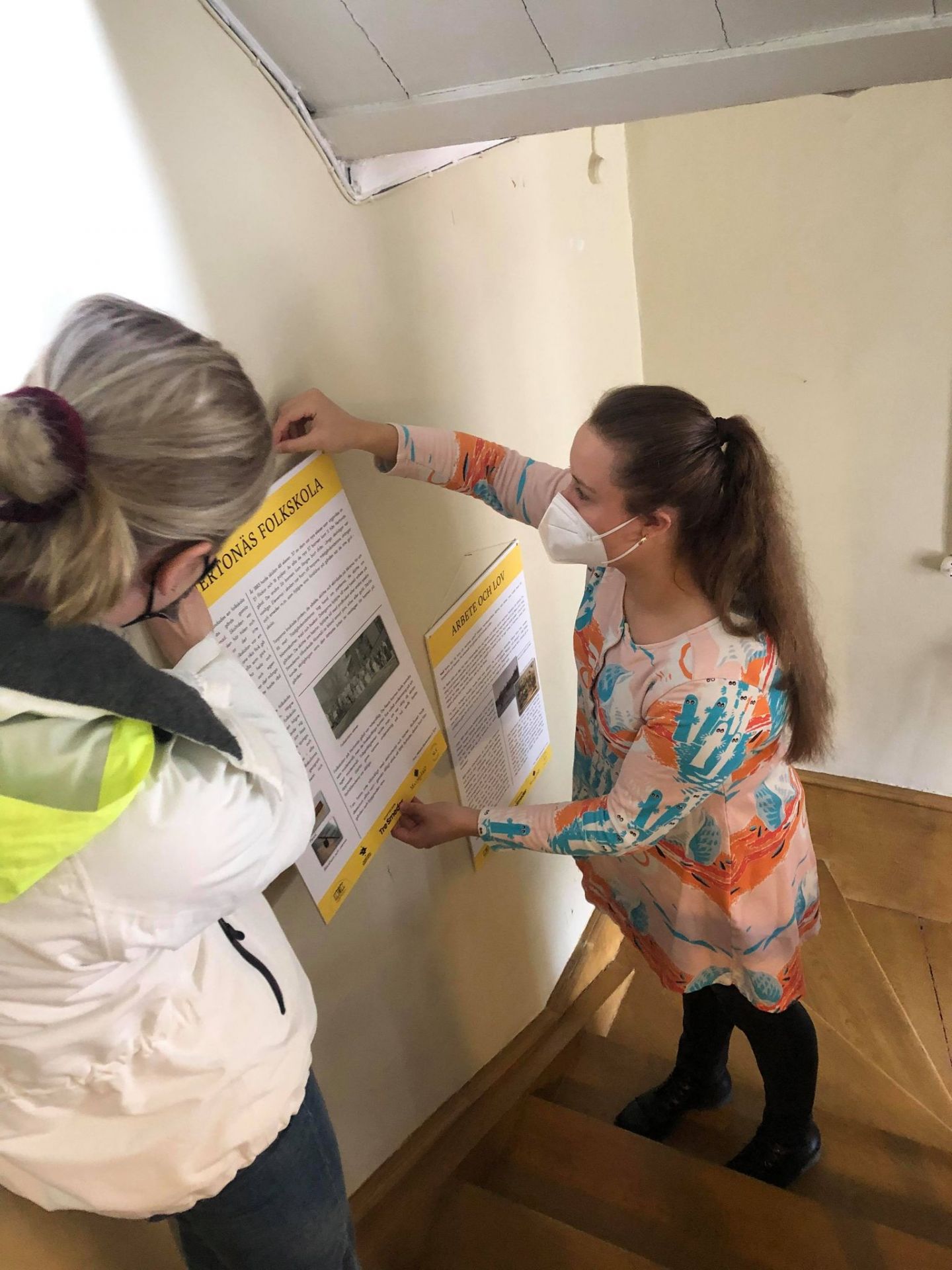
Arranging the texts of the exhibition. Photo: Eira Aalto.
Objects in the showcase. Photo: Wilhelm Breitenstein.
Treasure hunting. Photo: Wilhelm Breitenstein.
Along with Eva Ahl-Waris, touring Knusbacka. Photo: Wilhelm Breitenstein.
